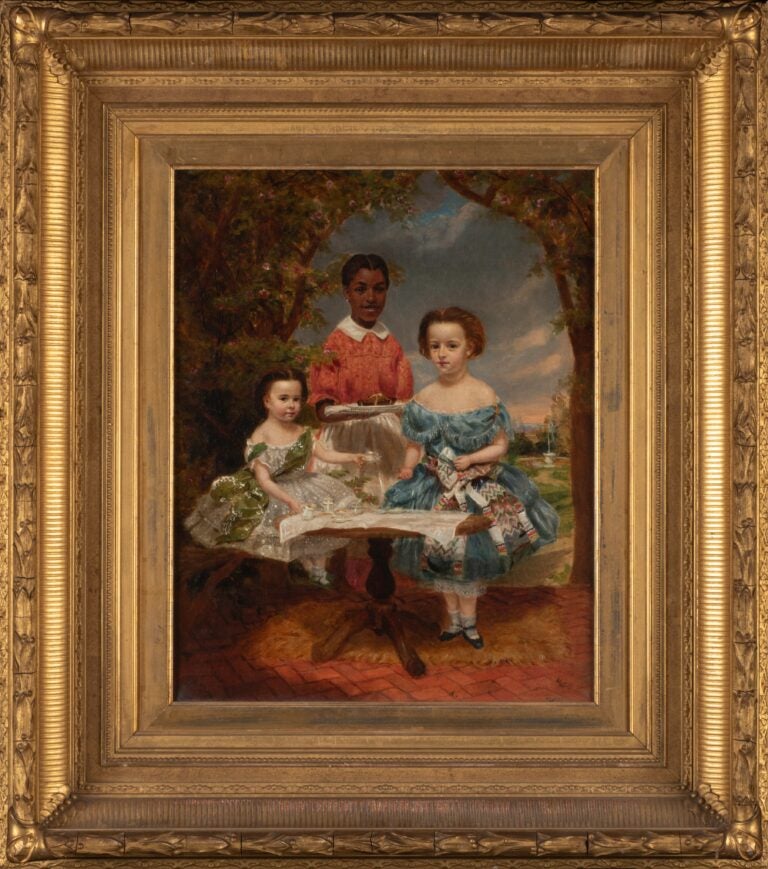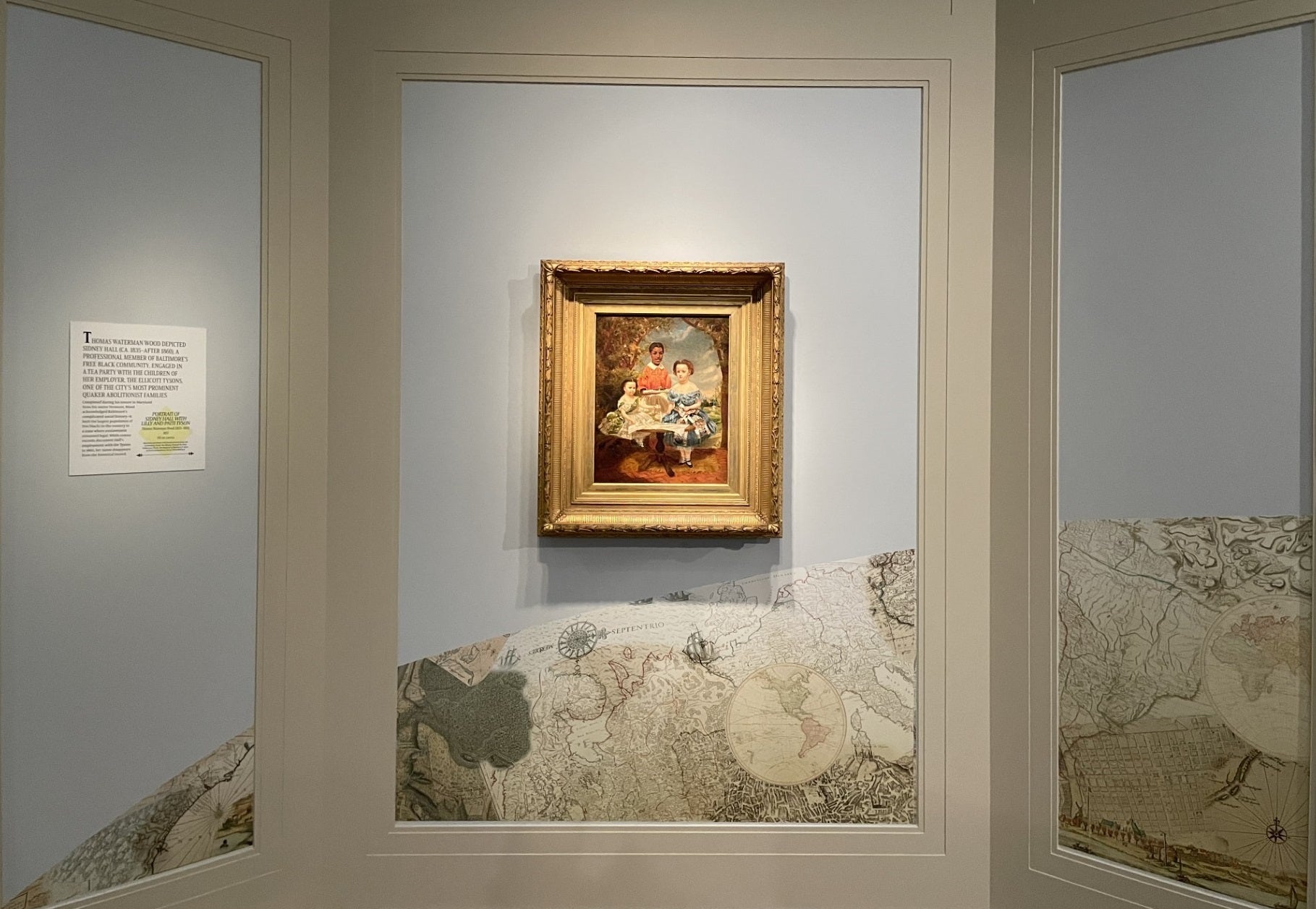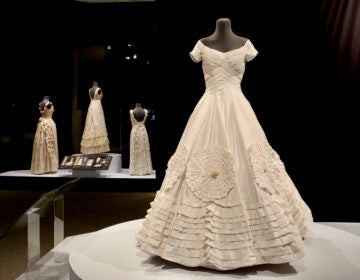Delaware’s Winterthur Museum acquires ‘document of Black history’ featuring a free Black woman as a central figure
A well-preserved painting from 1857 by Thomas Waterman Wood shows another side of Black life and is now on display at the Winterthur Museum.
Listen 1:57
The Winterthur Museum in Delaware announced on May 6 its acquisition of a 167-year-old painting by Thomas Waterman Wood. It's considered a "document of Black history." (Courtesy Winterthur Museum)
From Philly and the Pa. suburbs to South Jersey and Delaware, what would you like WHYY News to cover? Let us know!
A rare painting, hailed as a “document of Black history,” is now part of the permanent collection at the Winterthur Museum, Garden and Library in Delaware.
This near-pristine artwork offers a dignified glimpse into the life of Sidney Hall, a free Black woman in 19th-century Baltimore, portraying her role within a prominent Maryland family.
“It instantly resonated [and gives] Winterthur a chance to tell a more complete history that we have not been able to tell in this way,” said Alexandra Deutsch, the John L. and Marjorie P. McGraw director of collections. “A lot of people don’t realize how large the free Black community in the nation at that time in certain cities was, how significant they were and how they were economic contributors.”
The museum’s acquisition reflects a broader effort to diversify historical narratives through art.
The painting, created by Thomas Waterman Wood in 1857, features Hall prominently at the center, a departure from contemporary depictions that often reinforced racial hierarchies. Waterman Wood, an abolitionist and a genre painter, is known for his series depicting free Black professionals.
His ethos translates into how Hall is portrayed, says associate curator of art and visual culture Kedra Kearis.
“While [the painting is] not large, her presence is large,” she added.
A 22-year-old Hall wears a dusty coral pink gown, holding a silver tray with a tea pastry. Two young girls, Patty and Lily, flank her left and right in blue and green gowns accented with white lace.
The backdrop, an idyllic spring scene. Teatime on an outdoor brick patio beneath a lush arbor with pink flowering trees. The work is roughly 2 feet by 3 feet in a gilded gold frame.

Her employers, James Ellicott and Harriet Jolliffe Tyson, were former Quakers and staunch abolitionists, which influenced their familial and societal interactions.
Quaker records at the Friends Historical Association show James retired from the Society of Friends in 1847, the same year he married Harriet Jolliffe. Quaker practices encourage marrying within the community, which James did not. This explains the ornate clothing the children are wearing 10 years later, rather than the plainclothes Quaker families usually wore.
Historical context underscores the painting’s significance. Painted just four years before the Civil War, it captures the complexities of race, class and identity in a pre-war U.S. Although not all Quakers were anti-slavery, the Tysons, descendants of Quaker abolitionist Elisha Tyson, continued their family’s legacy of advocating for equal rights.
“We’re talking about people who stand out,” said Jordan Landes, curator at the Friends Historical Library of Swarthmore College.
The family has deep local ties, too. Notably, Martha Ellicott Tyson, James’ mother, was an abolitionist and co-founder of Swarthmore College.
Images like these are often held in historical archives, like the one at the Friends Historical Library of Swarthmore College, said Celia Caust-Ellenbogen, associate curator and historian at the nonprofit. Caust-Ellenbogen said images Black servants who worked for Quaker families do exist in their collection, however none this colorful.
“In this image, even though Sidney Hall is a servant, we can see her features, we can see her personality,” she added.
This work, she said, is “uncommon but not unique.”
However, it is the tip of the iceberg, Kearis added. She is sorting through archives and records to learn more about Sidney Hall. Just last week, she found in the Maryland State Archives evidence that Hall could read and write.
The latest news: Records show she died at 86 years old in Baltimore.
“We are beginning to build out a story and that record may lead us to a whole family network of the Halls and to other individuals that are part of this narrative around this painting,” Deutsch said.
The painting is on display permanently at 5105 Kennett Pk., Winterthur, Del.
WHYY is your source for fact-based, in-depth journalism and information. As a nonprofit organization, we rely on financial support from readers like you. Please give today.






